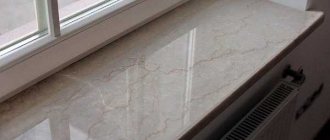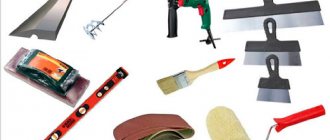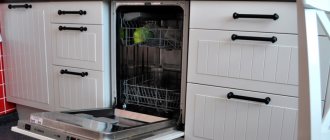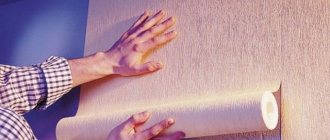In a modern interior there is no place for unnecessary details: every little detail must correspond to the style decision and complement the composition conceived by the designer. In such conditions, it is impossible to install the hatch openly, and it is unlikely that it will be possible to successfully disguise it (with a panel, mirror, blinds, etc.). It is easier and more correct to make the inspection hatch blend in with the finish, that is, it is invisible.
A hidden-mounted inspection hatch will help you realize your plans. These products come in hinged, sliding and removable door types. They can be built not only into walls, but also into bath screens, floors and ceilings. Most often, inspection hatches are installed in the bathroom, toilet, kitchen - in places where technical communications are laid.
We offer a comprehensive solution to inspection issues for any premises, as well as building facades. Today, Praktika produces wall, ceiling and floor inspection hatches in both standard sizes and according to customer sizes (production time is 7–10 working days). The company's product range includes the following models:
- For the ceiling - “Tablet” and “Grand” for painting or finishing with a material no more than 1.5 mm thick.
- For walls - “Euroformat”, “Format”, “Atlant” (with a hinged or sliding door, under tiles), “Contour” (with a removable door, under tiles), “Tablet” (the same model as for the ceiling, but in other sizes, for painting), technical door “Fort”, the maximum size of which can be a record 2x2 m.
- For the floor - “Portal” (with gas shock absorbers) and “Barrier-2” (with a removable cover).
The greatest demand is for wall hatches for tiling (for installation in bathrooms). Experts emphasize that the installation of such a hatch should be provided for at the design project development stage, otherwise there is a risk that the hatch cannot be made completely invisible. When choosing a wall hatch, you must do the following.
Rational installation of the inspection hatch
The inspection hatch is a device made of frame binding and one or two sashes. The product is intended to mask a technological opening, which is formed to provide open access to node connections, shut-off valves, and metering devices in the system of certain utilities. In this case, the networks are mounted according to a hidden principle in niches of structures or behind cladding materials or separate boxes.
The convenience of installing inspection hatches is that for preventive inspection of communications, repairs or taking readings from metering equipment, it is not necessary to violate the integrity of structures and decorative finishes. There are several varieties of finished products that do not require additional decoration. This does not exclude the possibility of using lightweight covering or painting materials. Another group of devices is intended for subsequent cladding with tiles, panels, lining and other samples that fit into the overall interior of a particular room.
Masking the technological opening against the background of the general cladding Source prom.st
What to look for when choosing a hatch
The first important issue is the location of the hatch. Based on this, the design and materials that are most suitable are selected. If you intend to install it under a bathtub or sink, you need to choose aluminum structures, as they are the most resistant to corrosion.
The second issue is the free space available for opening. If it is limited, you should give preference to a model with a sliding opening.
The seal plays an important role in this design. If the hatch is located where water regularly enters, it is necessary to install one of the types of seals.
Seals are:
- Pile. It looks like a thin pile tape with an adhesive backing. Suitable only for protecting the insides from dust, but not from moisture.
- Rubber. The same one has a self-adhesive base, ideal for isolating the communications inside the hatch from moisture. However, over time it may begin to peel off from the surface due to increased humidity.
- Petal. The best of the existing options, however, it is not installed on all design variations. It is located in a special groove, completely isolating it from moisture when closed.
Types of plumbing hatches and their sizes
When choosing an inspection hatch, you need to take several parameters into account. These include dimensions, material, design, purpose and rules of installation and use. Let's take a closer look at each of the criteria.
One of the first signs by which a hatch is selected is the material. There are only three types of popular solutions:
- Plastic . A budget solution with low weight and neutral white color. Due to the ease of manufacturing of swing models, the sizes of plastic hatches are presented in a wide range: from 10*10 mm to 800*500 mm. Installation is carried out by inserting the frame into the seat and fixing it with self-tapping screws and liquid nails. Swinging most often occurs after pressing the lower corner of the door.
- Metal . For production, as a rule, alloys with aluminum as a base or thin sheet steel are used. In order to protect products from corrosion, they are coated on the outside with powder paint and on the inside with anti-corrosion primer in the same tone. The designs and dimensions of the samples are similar to plastic models. The disadvantages include the relatively high cost, but it is compensated by the durability of the metal, a wide selection of paint and varnish products to update the protection and appearance of the hatch.
Sample of a simple metal hatch for plumbing Source mtk65.ru
See also: Catalog of companies that specialize in engineering systems (heating, water supply, sewerage and others) and related work
- Combination of materials . There are two fundamentally different compositions: a door leaf made of gypsum fiber sheet for gluing tiles, two frames (on the leaf and for installing the hatch in the seat). The frame design can be made of an alloy containing aluminum or reinforced steel. The former are lighter, but more massive due to their low load-bearing capacity. The latter are heavy, but cope with greater pressure with smaller dimensions.
The third option for inspection hatches is often called invisible. This is justified by masking the opening with the facing material of the main part of the wall, ceiling or floor. The main thing is to choose the right type of mechanism so that you don’t have to replace an expensive (compared to other models) hatch with a new one. It is also worth noting that the manufacturer’s warranty does not apply to the mechanical part of the products.
The table below provides an overview of the design solutions of various types of hatches.
| Constructive | general characteristics |
| Swing | The traditional solution is a device similar to a regular sash on a window, interior or entrance door. Installation is possible almost anywhere where there are no obstacles to opening the hatch to the extent necessary for access to communications. The door is controlled by a slot or a handle attached to the outer surface, rubber or plastic suction cups, or latches. There may also be different fasteners: magnets, locking mechanisms with matching slots on the frame binding. |
| Push | As a rule, such a sample has a similar solution to the swing version. The hinges can be located on either side - depending on the degree of ease of use. The shutter is controlled by pressing it. This solution is relevant for installing an invisible hatch for subsequent cladding with tiles or panels. |
| Sliding | Here the door moves along the main plane with a slight extension from its seat. This solution is relevant for small rooms, hard-to-reach places where it is impossible or irrational to provide space for a swing model. Given space limitations, a clamping mechanism with locking magnets is often installed here. For convenience, you can also use suction cups to open and close the opening. |
| Folding | The best option in conditions where movement of the sash in the lower part of the inspection opening is unacceptable. Typically the sash deflection angle is maintained at 45 degrees. In addition, there are chains with carabiners for fixing the door in the desired position. There are varieties that are not secured at the bottom with screws and self-tapping screws in order to completely remove the cover for maintenance or repair work. |
| With two doors | As a rule, such products are installed in large openings for access to utility connections and equipment. Here the dimensions are often close to or exceed 1 meter. Installing a two-door hatch in this case is the optimal solution, since any single-leaf option will look too massive or not withstand its own load (especially with cladding). |
Structural elements
The type of hatch depends on its design features. Wall options consist of the following elements:
- frame (plastic, aluminum);
- lock;
- loops;
- sash.
Hatch elements
Scheme of a rubber hatch-clip
A plumbing hidden door for a sanitary room is made of moisture-resistant material or treated with special waterproof materials, for example, drywall is coated with a moisture-proof emulsion.
The method of opening and closing the sash depends on the hinge mechanism. The simplest option is hinged hinges, the complex one is double hinges with additional adjustment units.
Scheme of the hatch frame structure
Inspection frames are mounted in two ways (liquid nails, self-tapping screws) into a niche or wall. The lock can be roller or push. In one case or another, it is hidden.
Features of installation of inspection hatches under tiles
Before installing an inspection hatch under a tile or a finished sample, it is necessary to correctly form the technological opening. A reliable support base made of wooden beams, boards or metal profiles is assembled under the supporting frame. The exception is the block design. Here you may need additional leveling of the side walls with durable cement plaster.
Installing a hatch on a metal profile frame before covering the walls with plasterboard Source cstor.nn2.ru
The next step is to install the main frame. Here it is more convenient to complete the task after removing the sash from the binding. It is important to carefully adjust the position of the “box” taking into account the horizontal and vertical levels. If the diagonals between opposite corners are different, then the door will not fit freely into the opening, and the fittings and door leaf will quickly fail. The frame for loaded doors must also be aligned in the longitudinal plane to prevent damage to the decorative finish and control mechanisms.
Plastic hatches are often fixed with liquid nails. Craftsmen recommend not focusing on the lightness of finished products. For any model, the “box” must be additionally secured with self-tapping screws, and, if necessary, with dowel nails. After this, you can assemble the structure and check the entire installation for correctness.
Opening mechanisms
Manufacturers install the following door opening mechanisms:
- swing;
- push;
- folding;
- sliding
Each type of opening has its own advantages. When choosing, you should focus on ease of use.
Image gallery
Photo from
Swing door opening mechanism
Invisibility hatch with push mechanism
Sliding mechanism with three-link hinges
Hinged hatch for hard to reach areas
It is hardly possible to come up with a more convenient opening mechanism than a hinged one. However, an audit is often needed where access is difficult due to equipment or furniture. Then folding and sliding models come to the rescue.
If there is space on at least one side, then it is better to choose a sliding mechanism. And for areas with difficult access, folding structures with the ability to completely remove the door are more suitable.
Briefly about the main thing
An inspection hatch is a structure made of a frame and a door to mask the technological opening.
There are ready-to-use samples made of plastic or metal, blanks with a sash for subsequent cladding with tiles or other materials.
Hatches differ according to several criteria: material, dimensions, opening methods, purpose.
When it comes to door control, there are classic options, folding (removable) or retractable options.
By opening, samples with shut-off valves, push-type or with magnets differ.
The hatch is installed after a reliable, durable seat has been formed.
The supporting frame is attached to liquid nails and hardware, taking into account compliance with the horizontal and vertical levels.
Ratings 0
Joints between tiles
In order to make the inspection hatch under the tile as inconspicuous as possible, you need to pay attention to this nuance. After the installation of the structure into the surface is completed, the tiles on the hatch cover are glued and processed, and the hatch is closed. Then the seams that are located between it and other tiles must be filled with silicone. This is done to ensure maximum invisibility. Before application, you first need to cover the contours of the adjacent tiles with masking tape, and then only fill the seams with silicone. After it hardens, you need to carefully draw a sharp object along the contour of the tape, and then peel it off. You will get a neat inner seam.
To ensure access, the following is done. Using a utility knife, the silicone is cut at an angle along all sides of the structure. Please note that cutting must be done as carefully as possible, as there is a high risk of ruining the seam and scratching the tile.
Price
Approximate price for high-quality plastic revisions of the most popular models (in rubles):
- 100 x 100 mm - 140;
- 150 x 150 mm - 160;
- 150 x 200 mm - 180;
- 200 x 200 mm - 200;
- 200 x 250 mm - 220;
- 200 x 300 mm - 240;
- 250 x 300 mm - 280;
- 250 x 400 mm - 300;
- 300 x 300 mm - 320;
- 400 x 500 mm - 600;
- 500 x 500 mm - 650;
- 400 x 600 mm - 850.
The cost of more complex structures made from high-strength materials can be quite high. The average price of steel models made by argon arc welding and having a removable door is about one and a half thousand rubles.
The cost of standard models based on an aluminum or steel profile with a hinged or removable door varies between 1500-2200 rubles.
Modern metal models that have non-standard geometry and are distinguished by impressive dimensions will cost consumers the most, but stores based on their own production most often offer more affordable designs, and are also ready to make products “to order.”
Which hinge is better: steel or aluminum
Quite often, buyers argue among themselves about which hinge material is better - aluminum or steel. To obtain the most detailed answer, products from four popular manufacturers were tested. The maximum load that the hatch hinge can handle in the event of a uniform increase in the load on the open door was tested.
It turned out that the aluminum alloy cracked under a load of 600 kilograms, and the steel hinges were bent to such an extent that they could not be straightened in order to close the hatch. We can conclude that there is no difference between the type of material - it all depends on the preferences of the buyer.
Hinged sliding and removable doors: which ones to choose
Most often, apartment owners prefer to install technological hatches equipped with hinged doors. The specific design of the hinge makes it possible to open the door parallel to the wall, and only then swing it open. The result is the ability to fix tiles whose dimensions exceed the size of the door.
The hatch, equipped with sliding doors, has a three-link hinge. This solution is relevant in conditions of limited space, when, for example, it is necessary to open a hatch under large plumbing fixtures - for example, a bathtub.
Models with removable doors are characterized by simplicity of design. It consists of a door for decoration with tiles and an aluminum frame. Push locks are responsible for holding the door.











